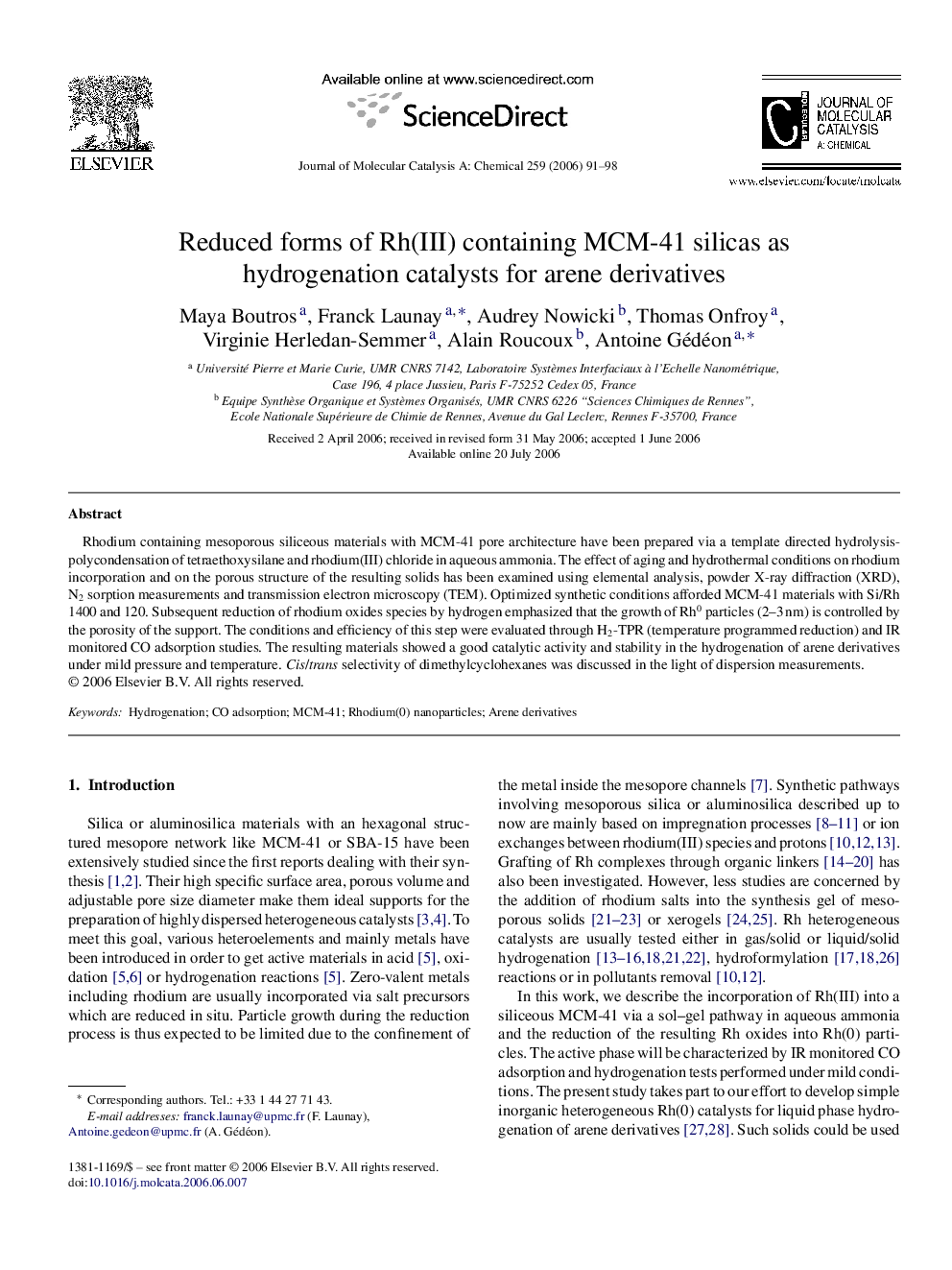| Article ID | Journal | Published Year | Pages | File Type |
|---|---|---|---|---|
| 68427 | Journal of Molecular Catalysis A: Chemical | 2006 | 8 Pages |
Rhodium containing mesoporous siliceous materials with MCM-41 pore architecture have been prepared via a template directed hydrolysis-polycondensation of tetraethoxysilane and rhodium(III) chloride in aqueous ammonia. The effect of aging and hydrothermal conditions on rhodium incorporation and on the porous structure of the resulting solids has been examined using elemental analysis, powder X-ray diffraction (XRD), N2 sorption measurements and transmission electron microscopy (TEM). Optimized synthetic conditions afforded MCM-41 materials with Si/Rh 1400 and 120. Subsequent reduction of rhodium oxides species by hydrogen emphasized that the growth of Rh0 particles (2–3 nm) is controlled by the porosity of the support. The conditions and efficiency of this step were evaluated through H2-TPR (temperature programmed reduction) and IR monitored CO adsorption studies. The resulting materials showed a good catalytic activity and stability in the hydrogenation of arene derivatives under mild pressure and temperature. Cis/trans selectivity of dimethylcyclohexanes was discussed in the light of dispersion measurements.
Graphical abstractThis work reports on the synthesis of rhodium containing MCM-41 from rhodium(III) chloride and tetraethoxysilane in aqueous ammonia. Subsequent reduction step led to Rh0 nanoparticles with 25–40% dispersion which are active and stable catalysts for the hydrogenation of arene derivatives under mild pressure and temperature. Cis/trans selectivity of dimethylcyclohexanes was discussed in the light of dispersion measurements. Figure optionsDownload full-size imageDownload as PowerPoint slide
